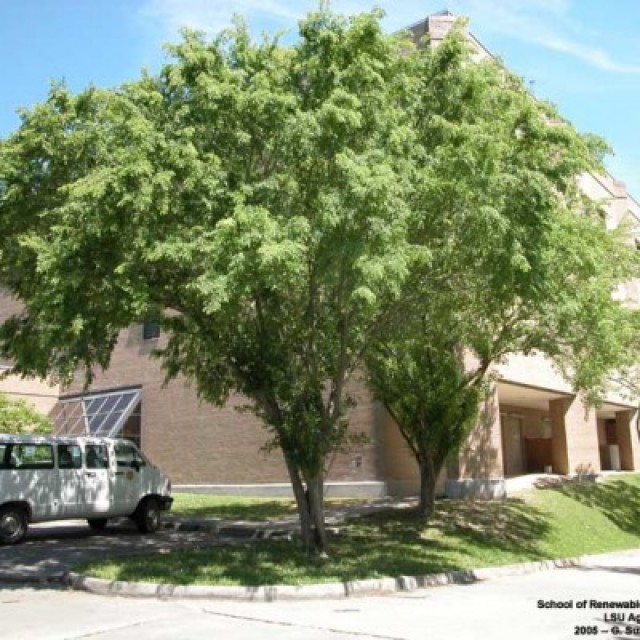COMMON NAME
Chinese elm
SCIENTIFIC NAME
Ulmus parvifolia
Plant family
Elm (Ulmaceae)
Plant group
Deciduous Trees and Shrubs
The Chinese elm, as the name suggests, is native to China and other eastern countries. It is also known as the Lacebark elm. This tree can grow to between 30 and 60 feet tall. The Chinese elm is often found in harsh landscape environments such as parking lots and along streets. An interesting fact is that it is also popular as a bonsai plant.
190 reports
58+
OBSERVERS
190+
OBSERVATIONS
Identification hints
The bark of Chinese elms is very distinct. It has a mottled look with flaky gray, tan, and red bark. This feature is what has also given it the name of Lacebark elm. The leaves are small, 2-5 cm long to 1-3 cm wide, green, and toothed. The flowers are small and inconspicuous. The fruits are flat and round with a seed encapsulated in a papery, wing-like outer covering.
Did you know?
The Chinese elm, as the name suggests, is native to China and other eastern countries. It is also known as the Lacebark elm. This tree can grow to between 30 and 60 feet tall. The Chinese elm is often found in harsh landscape environments such as parking lots and along streets. An interesting fact is that it is also popular as a bonsai plant.
DISTRIBUTION IN TH U.S.
Arkansas
,
Arizona
,
California
,
Florida
,
Georgia
,
Kentucky
,
Louisiana
,
Massachusetts
,
Maryland
,
Maine
,
North Carolina
,
New Jersey
,
Nevada
,
Oklahoma
,
Pennsylvania
,
Virginia
,
West Virginia
HABITAT
There is no information available about this species.
See Menu
- 2021 Chicago Botanic Garden. All Rights Reserved.
-
Creative Commons
BY-NC-SA 4.0 - Terms of Use
- Privacy Policy
- Data Sharing and Citation Policies
- 2021 Chicago Botanic Garden. All Rights Reserved.



